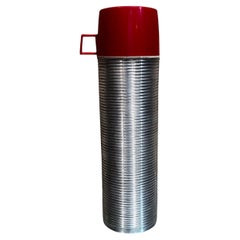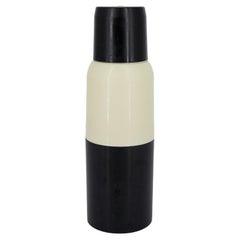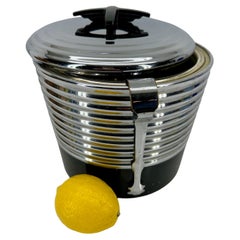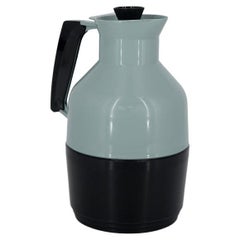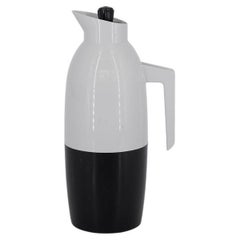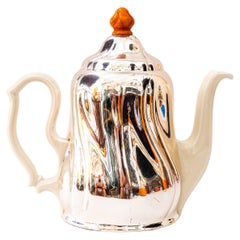Thermos Vintage Silver
Late 20th Century American Mid-Century Modern Pitchers
Metal
Late 20th Century Italian Pitchers
Plastic
Early 20th Century American Barware
Wicker, Mercury Glass
Vintage 1960s Swedish Scandinavian Modern Pitchers
Plastic
Mid-20th Century American Art Deco Barware
Mercury Glass, Plastic
Vintage 1960s Swedish Scandinavian Modern Pitchers
Plastic
Vintage 1960s Swedish Scandinavian Modern Pitchers
Plastic
Vintage 1950s Italian Mid-Century Modern Pitchers
Metal, Brass
Vintage 1950s Austrian Mid-Century Modern Ceramics
Metal
Mid-20th Century Italian Mid-Century Modern Barware
Wood
Vintage 1960s Swedish Scandinavian Modern Pitchers
Plastic, Teak
Mid-20th Century Italian Mid-Century Modern Barware
Brass
Mid-20th Century Italian Mid-Century Modern Barware
Brass
Mid-20th Century Barware
Brass
Vintage 1960s Italian Mid-Century Modern Bottles
Brass
Vintage 1980s Italian Barware
Vintage 1940s American Art Deco Barware
Vintage 1970s Danish Scandinavian Modern Pitchers
Plastic
Mid-20th Century Italian Mid-Century Modern Barware
Brass
Mid-20th Century Italian Mid-Century Modern Barware
Brass
1970s Italian Decorative Objects
Vintage 1970s Italian Mid-Century Modern Barware
Stainless Steel
Mid-20th Century Italian Mid-Century Modern Barware
Brass
20th Century Italian Decorative Objects
Mid-20th Century Pitchers
Silver Plate
Vintage 1980s Italian Modern More Dining and Entertaining
Brass
Thermos Vintage Silver For Sale on 1stDibs
How Much is a Thermos Vintage Silver?
Finding the Right Dining-entertaining for You
Your dining room table is a place where stories are shared and personalities shine — why not treat yourself and your guests to the finest antique and vintage glass, silver, ceramics and serveware for your meals?
Just like the people who sit around your table, your serveware has its own stories and will help you create new memories with your friends and loved ones. From ceramic pottery to glass vases, set your table with serving pieces that add even more personality, color and texture to your dining experience.
Invite serveware from around the world to join your table settings. For special occasions, dress up your plates with a striking Imari charger from 19th-century Japan or incorporate Richard Ginori’s Italian porcelain plates into your dining experience. Celebrate the English ritual of afternoon tea with a Japanese tea set and an antique Victorian kettle. No matter how big or small your dining area is, there is room for the stories of many cultures and varied histories, and there are plenty of ways to add pizzazz to your meals.
Add different textures and colors to your table with dinner plates and pitchers of ceramic and silver or a porcelain lidded tureen, a serving dish with side handles that is often used for soups. Although porcelain and ceramic are both made in a kiln, porcelain is made with more refined clay and is more durable than ceramic because it is denser. The latter is ideal for statement pieces — your tall mid-century modern ceramic vase is a guaranteed conversation starter. And while your earthenware or stoneware is maybe better suited to everyday lunches as opposed to the fine bone china you’ve reserved for a holiday meal, handcrafted studio pottery coffee mugs can still be a rich expression of your personal style.
“My motto is ‘Have fun with it,’” says author and celebrated hostess Stephanie Booth Shafran. “It’s yin and yang, high and low, Crate & Barrel with Christofle silver. I like to mix it up — sometimes in the dining room, sometimes on the kitchen banquette, sometimes in the loggia. It transports your guests and makes them feel more comfortable and relaxed.”
Introduce elegance at supper with silver, such as a platter from celebrated Massachusetts silversmith manufacturer Reed and Barton or a regal copper-finish flatware set designed by International Silver Company, another New England company that was incorporated in Meriden, Connecticut, in 1898. By then, Meriden had already earned the nickname “Silver City” for its position as a major hub of silver manufacturing.
At the bar, try a vintage wine cooler to keep bottles cool before serving or an Art Deco decanter and whiskey set for after-dinner drinks — there are many possibilities and no wrong answers for tableware, barware and serveware. Explore an expansive collection of antique and vintage glass, ceramics, silver and serveware today on 1stDibs.
- 1stDibs ExpertNovember 4, 2024To identify vintage silver, use the hallmarks on your piece. You will usually find them on the bottoms and interiors of hollowware and decorative objects, as well as on the handles of flatware. Using trusted online resources, research the hallmarks to identify the maker and determine what characteristics to look for when dating its pieces. Employing the recommended dating method, determine the approximate age of your item. It would be considered vintage if it is 20 to 99 years old. Antiques are 100 years old or more, while contemporary pieces date back to the last 20 years. You can also enlist the help of a certified appraiser or knowledgeable antique dealer to simplify the process. Find a collection of vintage silver decorative objects on 1stDibs.
- 1stDibs ExpertMay 3, 2024To tell if silver is vintage, locate the hallmarks that identify its maker. Then, use trusted online resources to determine when the maker was active and to look for pieces similar to yours to estimate when it was produced. Generally, silver made 20 to 99 years ago is vintage. Older pieces are antiques, while newer ones are contemporary. A certified appraiser or knowledgeable antiques dealer can help you identify vintage silver. Explore a wide range of silver wares on 1stDibs.
- 1stDibs ExpertApril 5, 2022“Vintage” is a word used to generally describe items that were made before 1950. “Antique” is a term applied to anything made before 1900. If you have vintage silver, it was likely created between 1900 and 1950. Shop a collection of vintage and antique silver from some of the world’s top sellers on 1stDibs.
- 1stDibs ExpertOctober 15, 2024Whether vintage silverware is real silver or not varies. Some makers producing silverware between 20 and 100 years ago used sterling silver and fine silver as materials. Others produced silver plate silverware, with items being made of a base metal and then finished with a thin layer of genuine silver. Silverware manufacturers also introduced stainless steel flatware during the early 20th century. Researching hallmarks found on your vintage silverware can help you determine whether or not it is real silver. On 1stDibs, shop a collection of vintage silverware.
Read More
20 Inviting Dining Rooms Perfectly Arranged for Entertaining
Top interior designers show — and tell — us how to create delectable spaces for hosting dinner parties.
Paul Revere Crafted This Silver Coffee Pot 250 Years Ago
Perhaps best known as a Revolutionary War hero, Revere was also an accomplished silversmith, and this pot is now available on 1stDibs.
From Arne Jacobsen to Zaha Hadid, Top Designers Tackle Tableware
Clever objects like these make feasting even more festive.
How the Chunky, Funky Ceramics of 5 Mid-Century American Artists Balanced Out Slick Modernism
Get to know the innovators behind the pottery countercultural revolution.
Ready for a Cinderella Moment? This Glass Handbag Is a Perfect Fit
Glass slippers might be the stuff of fairytales, but glass handbags? Artist Joshua Raiffe has made them a reality, and they're far less delicate than you might imagine, but just as dreamy.
With Dansk, Jens Quistgaard Delivered Danish Simplicity to American Tables
When a visionary Copenhagen designer teamed up with an enterprising Long Island couple, Scandi-style magic landed in kitchens and dining rooms across the United States.
Hostess Extraordinaire Aerin Lauder Shares Entertaining Tips and Auction Picks
The arbiter of good taste, who has curated a collection for 1stDibs Auctions, invites 1stDibs inside her family’s Hamptons barn for a firsthand look at her welcoming style.
Handmade with Lab-Grade Glass, This Decanter Holds Your Favorite Cocktail Concoctions
Artist Simone Crestani conjures the fascination you remember from Chemistry 101.
